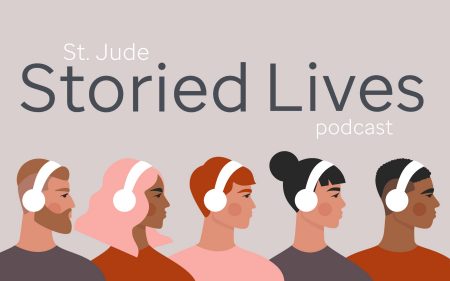
11 million children will die of cancer in the next 30 years. Here's how we could save half of them.
Dr. Carlos Rodriguez-Galindo of St. Jude, and his colleagues, call for a global push to improve pediatric cancer care. "Every day, hundreds of children are dying."

In another time, under different circumstances, Dr. Carlos Rodriguez-Galindo and his colleagues might have attracted the world’s attention to the singularly audacious goal they outlined recently: Preventing the deaths of more than 6 million kids from cancer.
The Lancet Oncology Commission, co-chaired by Rodriguez-Galindo, who also chairs the Department of Global Pediatric Medicine at St. Jude Children’s Research Hospital, published a report concluding that without additional investments in healthcare systems, some 11 million children age 14 and younger worldwide will die of cancer between now and 2050. Most of the deaths were predicted for low- and middle-income countries, where access to care is limited and childhood cancer cases routinely go undiagnosed.
The report also found, however, that with global increases in health-care spending totaling about $20 billion a year, more than half of those deaths – an estimated 6.2 million – could be prevented. Furthermore, it said, every dollar spent on the effort would bring a threefold return in economic benefits.
“That was work we were hoping would call the attention (of) governments, call the attention of the major decision-makers,” Rodriguez-Galindo said.
Unfortunate timing, however, deprived the report of the attention Rodriguez-Galindo hoped it would receive. Published by The Lancet Oncology journal in March, it came out just as the burgeoning COVID-19 pandemic began dominating news cycles. “We got zero calls from the media,” he said.
The experience hasn’t deterred Rodriguez-Galindo from his quest to prevent what he calls needless deaths from pediatric cancer around the world. As director of St. Jude Global, he’s leading an initiative that works with doctors and institutions in about 60 countries to improve care and expand access to healthcare while also providing education about childhood cancer.
The challenge is daunting because while 4 of 5 kids getting cancer in higher-income countries like the U.S. survive, the statistics are reversed in low- and middle-income nations, where 4 of 5 die.
Of the 400,000 children around the world afflicted with cancer each year, only half are diagnosed, Rodriguez-Galindo said in a recent video discussion with St. Jude donors. “So 200,000 children every year die in agony, with no access to care.”
“Of the 200,000 diagnosed,” Rodriguez-Galindo continued, “maybe only a third actually may be cured. So the bottom line is that only about 20% of children that develop cancer today … actually can be cured.”
Because it represents just a tiny fraction of all cancer cases, pediatric cancer tends to get left behind when governments set funding and policy priorities. But when measured in terms of the number of years of healthy life it robs, childhood cancer ranks among the world's most burdensome diseases and “is actually a public health and a global health emergency,” Rodriguez-Galindo said.
To address that emergency, Rodriguez-Galindo and the nearly four dozen other internationally recognized experts who authored The Lancet Oncology report prescribe a six-step course of action they say would “tackle the unacceptable inequalities” in care between rich and poor countries. The measures include covering childhood cancer as part of universal healthcare plans, ending out-of-pocket charges for treating cancer-stricken kids, and building national and regional networks to improve access to care.
Rodriguez-Galindo said the “major strides” made by St. Jude, like those that have increased the survival rate for acute lymphoblastic leukemia from 4% to 94% over the last six decades, need to be extended globally.
“All the progress we have made is nothing unless we can really think about how to make that a goal for children in the world,” he said.
The real tragedy, Rodriguez-Galindo said, is that so many kids in poorer parts of the world succumb to cancers that are curable in affluent countries.
“Every day, hundreds of children are dying … And that is because of inaction. This is not because we cannot prevent (the deaths), this is not because we cannot do something. It is because we don’t do anything.
"And that is the major catastrophe here, that cost of inaction, that we cannot protect the most vulnerable in our societies.”




